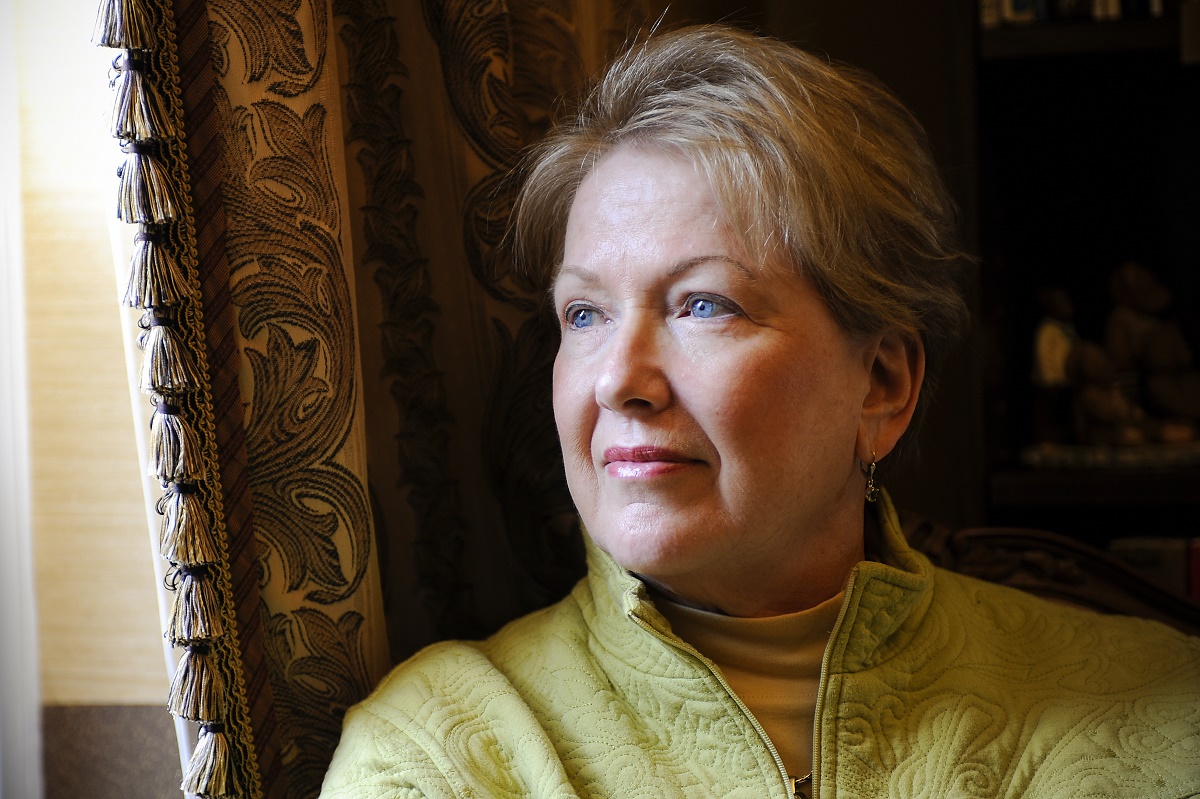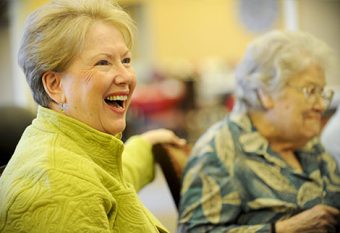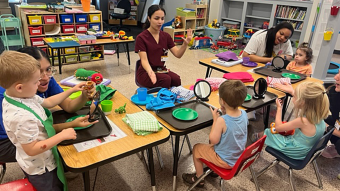
Feb. 21, 2012
The normal process of aging drives Curators Professor of nursing Marilyn Rantz’s work on improving life for elderly adults. Rantz — an experienced administrator and registered nurse — researches how to make seniors’ lives healthier and more independent as they age.
Rantz’s grants for aging research totaled $6 million in 2011. She classifies the amount as typical for her for a year, but the national agencies that examine care for seniors view the quality and quantity of her work as outstanding.
The American Academy of Nursing, in partnership with the John A. Hartford Foundation, honored Rantz with its 2011 Nurse Leader in Aging award. The award cites her research in aging and her leadership in developing MU’s TigerPlace.
TigerPlace is recognized as an innovative aging-in-place retirement residence.
Numerous MU studies show the aging-in-place model significantly reduces costs of care, results in earlier treatment of illnesses and raises residents’ understanding of caring for their conditions.
Rantz says that applying the model has the capability to save the health-care delivery system billions of dollars.

Loving the independence
Rantz fell in love with the challenges of long-term care in 1981 when she took a job as nurse administrator of a large county nursing home in Wisconsin. That facility was nothing like the MU retirement-living center she helped develop.
TigerPlace is not your grandparents’ old nursing home. It’s where they would choose to live — a residential community developed to keep them independent as long as possible.
In the 1990s, MU faculty specialists in aging developed a project to help reform the health care system for older people. TigerPlace opened in 2004, built to nursing-home standards with some waivers that help it avoid looking like a nursing home.
“Our vision was for it to be a service, research and practice environment and a really active place for people to live,” Rantz says.
Using experience from years of critical-care nursing and long-term care administration, Rantz parleyed her knowledge into a business plan for a public-private partnership. The Sinclair School of Nursing provides care; Americare Systems manages facilities and services, including dining and transportation.
The one- and two-bedroom private apartments — offering sensor technology to detect early changes in health conditions — have complete kitchens and bathrooms, as well as exterior and interior exits.
With a nurse on call 24/7 and access to wellness assessments, residents have health care on site, allowing them to live at home as their care needs increase through end of life.
TigerPlace’s connection to MU is openly visible. Residents enter the dining room through six floor-to-ceiling Ionic columns similar to those on Francis Quadrangle. Each of the 53 private apartments has an address on a “street” name reflecting a Mizzou location. And visiting grandchildren love to hug huge stuffed tigers that recline by the grand piano in the lobby and under a tree in the sports bar.
Older and wiser
Classes are among the learning opportunities offered at TigerPlace, where the philosophy is to keep brains healthy by keeping them busy. A central message board invites residents to attend classes — currently on sign language — or get tickets for a Mizzou game.
“I love the push of people to be actively independent. We expect them to be independent,” Rantz says.
The 65 TigerPlace residents, including many couples, select from an uncommon range of amenities.
Residents enjoy their own movie theater, spa, library and game room. Van transportation takes them shopping and to Mizzou events. There are water-aerobics activities, daily exercise classes and a workout gym. At dinner, the tables are dressed with white linens and fresh flowers, and wine is served.
A pedestrian bridge connects the facility to the Neighborhoods of TigerPlace, where MU research is applied through interventions such as rehabilitation and physical therapy after joint replacement or hospitalization.

It takes a team
To continue improving care for seniors — a rapidly growing population group — MU researchers invite TigerPlace residents to participate in research projects related to healthy living.
The studies use unobtrusive, non-invasive methods to test technology in aging, such as early detection of illness. Multidisciplinary research teams involve nearly 100 MU students, professors, doctors, nurses and other professionals, including fellows of MU’s Interdisciplinary Center on Aging.
“We have mechanisms that can determine an increasing fall risk. We can learn about activity levels and predict the potential for illness,” says Rantz, who collaborates often with Marjorie Skubic, Lapierre Professor of Electrical and Computer Engineering.
Their recent grants, through agencies such as the National Institutes of Health and the National Science Foundation, have funded studies on risk of falling and early-illness detection. A new grant will underwrite more research on a bed sensor for early-illness recognition.
And it isn’t just faculty who are involved at TigerPlace. MU students of health care and of electrical and computer engineering are actively engaged in research. Electrical and computer engineering students, for example, have developed algorithms on early illness.
Since about 2005, Rantz and Skubic have helped more than 50 students fund their education through grants from agencies such as NSF and NIH.
Warm and fuzzy
Sitting in a visiting area with a white Maltese puppy in her lap, Rantz talks about the facility she helped develop. She scooped up the puppy from the TigerPlace veterinary room on her way to chat.
“The human-animal perspective is a wonderful part of our philosophy here. From the beginning, this was going to be a pet-friendly environment,” Rantz says.
Because TigerPlace is their home, residents keep their pets. Windowsills in all apartments are wide to accommodate curious cats, and screened porches offer pets a fresh-air retreat.
Rantz speculates that TigerPlace may be the only senior residential center with a veterinary clinic. A veterinarian holds clinic hours monthly for resident pets, and students assist with animal care by walking dogs and changing litter boxes.
The Research Center for Human-Animal Interaction in the College of Veterinary Medicine collaborates with TigerPlace on human-animal connections.



